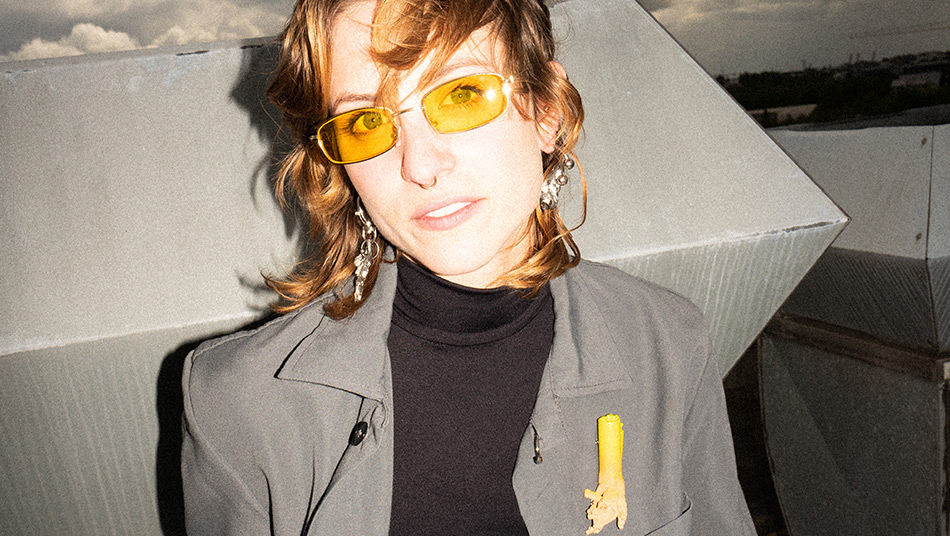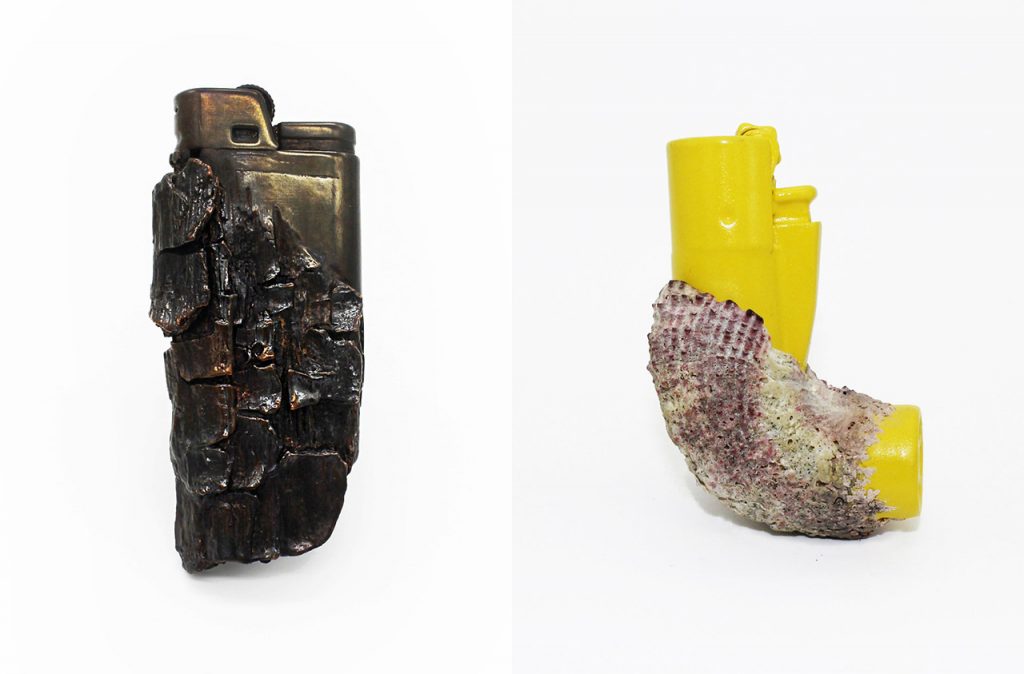
Corrina Goutos won the ITS Sustainability Award last July. A native of Upstate New York now based in Hamburg Germany, she is a contemporary jewelry artist whose work deals with themes of consumerism. Her documentation of post-consumer waste in urban environments directly informs her studio practice. Fascinated by the wavering barrier between products of mass production and the forces of nature, she sees this uncanny fusion as evidence of life’s ability to prevail. Her work is in itself crafted from fragments of material culture, through experimental casting and connections; her studio practice reanimates a range of household materials. Whilst addressing our planet’s most pressing issues, Corrina also quarrels with the ambitions of capitalist society.
She is internationally active in the field of contemporary jewelry, having recently lectured and presented a solo show during the largest contemporary jewelry fair in Munich, as well as exhibited throughout Europe as well as in China, Canada and the USA. She was recently spotlighted by Vogue Italia and Vogue Germany, by CURRENT OBSESSION Magazine and Klimt02, as well as selected as a finalist for the Art Jewelry Forum’s Annual Award.
We asked her a few questions about responsible creativity, today’s role for a designer and the next steps in her career.
ITS: You hit three targets with your ITS 2019 jewelry collection: you recycled discarded plastic items, integrated them in a coherent aesthetics while launching a very strong visual message on humanity’s problems with waste. There seems to be a lot of experience behind your responsible approach towards creativity, when did your attention to the planet’s problems begin?
CG: It is basically the only approach I ever had. As a child my parents gave me a lot of space to explore my imagination. I spent all day in the summer barefoot maneuvering through the small, mostly dried up creek that ran through my backyard. I would assemble favorite rocks, observe small life forms, and play in my fantasy world until dinnertime. When I began seeing people’s rubbish dumped into my cherished place this deeply upset me, I photographed it and asked to join my father at the town meeting to address this. My grandmother also grew up in a low-income family in the Netherlands and she taught me my first craftmanship skills, sewing and repair work. This enabled me to value handmade objects over anything one could purchase. My attachment to nature and dis-attachment to consumerism influenced everything I’ve produced since an early age. However it wasn’t until the last couple of years that I was able to regain my optimism, and infuse an essential element of humor which I believe draws people to consider subjects more in depth.

ITS: What is the role of a designer in an era when the entirety of our life decisions, any idea and any project we develop should start from the question: “How can I impact as little as possible?”
We have to be Jacks of all Trades; gone are the days of the purely decorative object. Young designers like me have a responsibility to investigate sustainable practice with every cell in their body, if we want to have a future to design at all. It sounds like an impossible weight to bear, but the fact is we are not in this alone. When learning any craft we familiarize ourselves with the masters that came before us, and then we learn to build upon their successes. Sustainable practice is getting the attention it deserves now, but many have dedicated their life to “no-waste” making even if it was just out of necessity. What’s certain is aesthetics mustn’t be sacrificed to make conscious work, learning from those who came before us, combined with the vast range of new technologies available. Designers have everything they need at their fingertips to do good rather than harm to our current climate.

ITS: Picture yourself speaking about your experience at the ITS Arcademy to an audience of teenagers passionate about design and about to decide what their next step will be after High School. What message would you like them to go back home with?
I would tell them to be true to their inner child, because it’s where your artist lives and where your creativity sprouts from. Never loose that sense of wonder and moral distinction that is intrinsic to all of us. In your teenage years you are especially torn between the self and the group. Follow your gut and surround yourself with people who challenge you to be your best. If you pamper your artist, then your child’s eye will remain forever, and when your child has a lifetime to play the work you’ll create will be so original it will appeal to others. Do your field research and have your favorite designers, but filter all these things you love through your own experience. You’re the only one who can tell your visual story, so be original!
ITS: What are you working on at present and how do you wish your career to develop?
I will be showing at several contemporary jewelry fairs throughout Europe and in NYC. Following these I will begin a fun collaboration with an acclaimed jewelry artist from California, which we plan to release next March. Parallel to these I am slowing down production to innovate new techniques aimed at “closing the loop”, creating a no-waste studio practice. I envision myself becoming a bit of an expert on the subject and hope to visit institutions like the ITS Arcademy to share my expertise on this relevant subject in the future.


